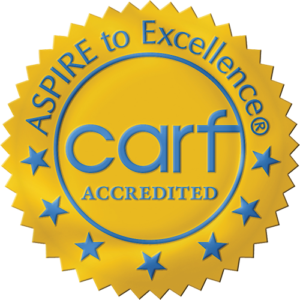
Dope. Crystal. China Girl. Street names have been around for years, and many have heard them in passing or in the news. But what happens when your teen has some friends over and you hear strange and unknown terms? What if they start talking about “scoring the stuff for purple drank,” or “making a date with Captain Cody?” With popular slang always changing, it’s probably a good idea to brush up on your street name knowledge.
In 2021, over 450 drug overdose deaths were caused by prescription opioids (excluding fentanyl). At ReVIDA® Recovery, we aim to arm families with knowledge on subjects surrounding substance use disorders and what to look for in loved ones. Our program offers flexible outpatient treatment in a compassionate environment. Even though commonly prescribed, medications like codeine can still be used illicitly and lead to long-term complications, including dependence. Today, we are educating our parents and communities on the street names for codeine.
Table of Contents
Why Is It Important to Know Street Names for Codeine?
Street names are a type of slang used to reference substances without directly saying what they are. They have been around for many years as a way to keep a discrete profile while buying and selling illicitly. It is important to know and keep up to date with street names as they are commonly used and often changing. Knowing codeine’s street names can help you recognize if your loved one is speaking about and purchasing illicit codeine.
All of the forms of codeine are only available by prescription. This is why street names vary between each type as some are easier to get a hold of than others. Doctors, pharmacists, and government agencies do their best to regulate the prescribing of opioids such as codeine, but drug dealers still find ways to provide codeine illicitly. This is another reason why it is important to stay in the know about street names and what substances are commonly being sold in your area.
Codeine Street Names and Slang
Codeine street names can vary based on the type and way it is being consumed. Common slang names include:
- Captain Cody
- Cody
- School Boy
- Little C
These names are often used for codeine by itself, other names refer to codeine mixed or in a different form. There are not many emojis used to describe codeine on its own, but in some cases, a crystal ball (🔮) may be used. According to the Drug Enforcement Administration (DEA), seeing other emojis such as a bomb or explosion (💣💥) means high potency, suggesting codeine may be mixed with other substances to increase the effects.

Lean Codeine and Related Street Names
Lean codeine describes mixing cough syrup containing codeine with soda or juice. This is one of the most common forms of illicit codeine use as the cough syrup is relatively easy to come by. Street names for lean codeine include:
- Lean
- Purple drank
- Liquid heroin or lean heroin
- Sizzurp or sizzup
- Texas tea
Besides these names, there are emojis that refer to lean codeine. These include the grape emoji, baby bottle, and purple heart (🍇🍼💜). It is important to note that a common misconception is that lean codeine contains heroin as it is often referred to as liquid heroin. While both are opioids, codeine is not as potent as heroin, and the mix of cough syrup and soda does not contain any actual heroin.
Do Street Names Differ for the Forms of Codeine?
As we mentioned above, street names can vary between the forms of codeine. Besides codeine on its own and codeine in cough syrup, there is another form that can be found illicitly. Codeine with Tylenol® (acetaminophen) is referred to as T1, T2, T3, T4, and doors and fours. The numbers refer to the strength of codeine and Tylenol® (acetaminophen) in the medication. There are no emojis commonly associated with this form of codeine.
Signs of Codeine Use in a Loved One
Hearing your loved one using street names for codeine can be scary, but how can you be sure they are taking the substance? There are many signs of illicit codeine use to look for that can affect your loved one physically and mentally. Physical signs of codeine use include:
- Constipation
- Dry mouth
- Confusion
- Impaired coordination
- Drowsiness
- Dizziness
It is also possible to experience an overdose when taking codeine. When too much codeine enters the body, it becomes overwhelmed with trying to process it all. The central nervous system begins to slow, and vital processes such as breathing can stop. This can lead to coma, and potentially be fatal. A codeine overdose is a medical emergency and help should be sought immediately if you suspect an overdose.
As codeine use continues, the risk of dependence increases. Codeine works by attaching to opioid receptors, triggering feelings of relaxation and decreasing feelings of pain. Opioid receptors naturally respond to certain scenarios, but when codeine is taken frequently, they begin to stop functioning without codeine. This is how dependence begins, the brain needs codeine for the opioid receptors to activate. Between codeine uses, the person will feel increased depression and anxiety. The brain has become rewired and codeine becomes the catalyst for the person to feel “good.”
Lastly, as dependence and use increase, the person will experience codeine withdrawal between doses. Withdrawal is an uncomfortable process and causes a slew of symptoms. Codeine withdrawal symptoms include flu-like symptoms, abdominal cramping, diarrhea, anxiety, sweating, muscle cramps, and joint pain. Withdrawal typically begins 6-8 hours after the last dose of codeine and peaks around 24-48 hours after the last use. It is always recommended to consult with a medical professional to safely detox from codeine and minimize withdrawal symptoms.
How to Help When Hearing Street Names for Codeine
When someone you love is using street names for codeine, you may feel scared and worried for their well-being. Having a conversation is the first step in getting them help. Remember, they are a person first, not a problem. Referring to them as an “addict” or a “problem” will only end the conversation before it begins. Be firm in your boundaries but also show empathy to them and their feelings. Work together to come up with a plan of next steps, including exploring treatment options together. Recovery is all about surrounding the person with support, and establishing that early will help them see they have someone on their side.

Get Help for Codeine Use Disorder in Appalachia Today
Maybe you first tried purple drank at a party, not understanding what it was. Perhaps you stumbled upon a T3 pill in your loved one’s pocket. No matter how you ended up on this page, the good news is codeine use disorder is 100% treatable. Through quality codeine addiction treatment, you or your loved one will gain the skills and knowledge that will lead to a successful recovery. After a medical detox, you will focus on what led to where you are now, diving into the root causes of your codeine use disorder. Establishing healthy coping skills and learning how to manage life stresses provides you with the tools for recovery. Leaving codeine behind may feel impossible now, but taking that first step today will open the clouds to a bright future.
If you or someone you love is managing a codeine use disorder, it is not too late to reach out for help. ReVIDA® Recovery has helped many find their success in recovery from opioid and substance use disorders. Our program offers medication-assisted treatment because we have seen the difference it has made in saving lives. We pride ourselves in providing a safe space for healing in a compassionate and nonjudgmental environment. You don’t have to wait to begin, as our facilities throughout Tennessee and Virginia offer same-day appointments. Call us today at 423-631-0432 to learn more about our program offerings.
Reclaim your life.









